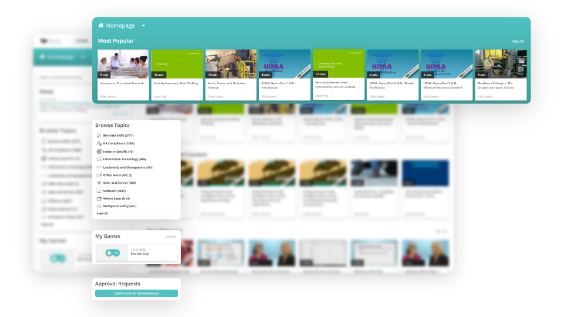CHANGE MANAGEMENT TRAINING
FOR YOUR ORGANIZATION
FOR YOUR ORGANIZATION
How Change Affects Business
Change is an inevitable part of business, but it doesn’t sit well with a lot of people. In the short-term, effects of change can be painful and hard to adapt to, but it can have a positive impact on success in the long run.By embracing change, businesses can create new opportunities for employees. They can then work on self-development by learning a new skill or software and then train others. By taking on this challenge, an employee could gain additional responsibilities and grow in their role in the company, adding more value the more they learn and develop their skills.
Certain organizational changes can have a positive effect on employee morale. If you were to relax your dress code perhaps or replace a narrow-minded manager with one more open to ideas, employee morale could rise as they are more comfortable or feel heard and respected.
When you are great at handling change, you are able to cultivate a culture that promotes innovation. If employees feel comfortable sharing ideas, they can create some great innovations to help business growth. One small idea from an employee can spark a huge success for the business.
Adapting can help a business keep up with new industry trends. Doing so can help attract new customers as well as keep current customers. If your competitor develops a new, innovative product or software, developing something similar can only help you reach new clients and retain current ones.
And changes don’t always have to be sweeping. Simple alterations to processes can help make your business more efficient. From a new point of sale to computerized payroll, these changes can help make jobs easier to complete while making things run more smoothly.
Types of Change
There are myriad changes that can occur in an organization. Here are five types of change you could encounter in your business.Organization-Wide Change
Every employee is going to be affected by this type of change, from the CEO to the newest hires. These kinds of changes could include restructuring the organization, initiating a policy change, or rolling out a new email system.
Personnel Change
When a company either goes on a hiring binge or has to lay off employees, these are examples of personnel change. Both can have a serious effect on employee morale and productivity. Naturally many employees fear layoffs or furloughs and anxiety skyrockets but hiring brings its own challenges as well. There could be disorganization or a culture shift when bringing in a lot of new people at once.
Transformational Change
Transformational change relates to changes within a company’s organizational strategy. When you’re suited to withstand rapid changes, you can be more adaptable when the time comes. When looking at this type of change, it is important to consider current innovations, recent culture trends, and what the social climate is like in your area.
Remedial Change
Remedial change occurs when a company reacts to poor performance or a deficiency of some kind. These types of changes include new equipment or software, opening a new job to close a gap, or creating a new training or onboarding program.
Unplanned Change
This is perhaps the most stressful change that can occur – when the unexpected happens. You can plan for hiring and firing. You can roll out new initiatives after lengthy discussion. But when blindsided by something unexpected, chaos can explode through the organization.
Why Change Management is Important
The intent of organizational change management is to lesson negative reactions of any general changes in a business. Whether it’s employees learning a new skill, restructuring hierarchy and responsibilities, or rolling out new software, change management involves a top-down approach to working through change.By managing change well, businesses are able to maintain a constant state of growth that allows workers to stay motivated and productive during the transition phase.
Preview Videos from The BizLibrary Collection
Change Survival Toolkit: Unplanned Change

Organizational Change: Understanding Resistance

Why Every Leader Needs to Leadershift

Making Change Management Successful
Organizational change has a lot of benefits but can also have some pain points. So how can you make sure your company is managing change well?
As in any endeavor, define clear goals and have a set strategy. Having these from the beginning will help you measure success along the way to make sure you are accomplishing what you set out to do. At the end, does the company look like you envisioned it?
You’ll have to combat employee fear and anxiety with any impending changes. At first employees might be resistant and reluctant. Clear communication will be your best tactic for getting buy-in from your team. Don’t be afraid to ask them their opinions – if they feel heard, they’ll be more likely to accept the new way.
For any change to succeed, there will have to be buy-in across the board. You’ll need to get managers on board, so be sure to communicate the intended vision with them. It’s also important to make sure the messaging is clear throughout the company. Have managers provide feedback and explain each new step to employees along the way.
Why Online Training Works for Learning Change Management Skills
Online training is quickly becoming the best way to teach employees some of the skills they need to do their jobs. Numerous studies have shown that online training is often more effective, and learners retain more information than with classroom training alone.
BizLibrary curates a large and diverse video training library with numerous courses focused on developing change management skills. Our micro video format breaks content up into smaller, more manageable chunks, making it easier for employees to learn and apply these skills on the job.
These online courses can be viewed on an individual basis – where an employee learns by themselves at work or at home – or as part of a group training environment or discussion.

Explore more
of our business
skills topics.
When Quick Med Claims (QMC) faced unprecedented company growth, they had to evaluate their training program to determine how to best handle this change.
Their program included new employee orientation, informal desk-side training with colleagues, and compliance training, which was tracked on a sign-in sheet. They felt their program was haphazard and in need of an update. They knew they could never create and maintain the amount of training content they needed.
They chose to partner with BizLibrary because we provided high quality content delivered on a platform that is easy to use for both learners and administrators. QMC was able to expand their program to cover a variety of training topics and easily track course completion.
Over the last three years, QMC has seen 55,000 video completions and has created an engaging training program and learning culture.
